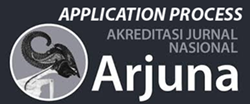Optimization of Fishery Product Quality Assessment in Dumai through Multivariate Analysis Based on Organoleptic Testing
DOI:
https://doi.org/10.59653/jimat.v3i01.1236Keywords:
Organoleptic Testing, Discriminant Analysis, Sensory Parameters, Fishery Product Quality, Classification AccuracyAbstract
The quality of fishery products is a critical factor influencing competitiveness and market acceptance, particularly for the fishery industry in Dumai City. However, assessing fishery product quality remains challenging, primarily due to the subjective nature of organoleptic testing, which is often influenced by variability in panelists' evaluations. This subjectivity can lead to inconsistencies in assessment results and reduce the reliability of quality evaluations. This study aims to optimize the quality assessment of fishery products by applying discriminant analysis, a multivariate analysis method based on organoleptic testing. We conducted the organoleptic test by evaluating six key sensory parameters: appearance, odor, taste, texture, mold presence, and slime. This approach seeks to minimize subjectivity in assessments and enhance the objectivity of results. The fishery product samples tested included a variety of local products, such as smoked catfish, shrimp paste, smoked patin fish, shrimp crackers, salted tonguefish, fish crackers, swordfish nuggets, patin nuggets, swordfish meatballs, catfish meatballs, and patin meatballs. Evaluations were conducted by trained panelists with the support of digital tools to improve the consistency and accuracy of results. The discriminant analysis results indicated that the model could classify product quality with an accuracy of up to 83.3%. Taste was identified as the most significant sensory factor in distinguishing high-quality products from lower-quality ones.
Downloads
References
Amri, K., Latuconsina, H., Triyanti, R., Setyanto, A., Prayogo, C., Wiadnya, D. G. R., Isdianto, A., Panggabean, D., Noviyanti, R., & Nazzla, R. (2023). Pengelolaan Sumber Daya Perikanan Laut Berkelanjutan. Penerbit BRIN.
Anggo, A. D., Suharto, S., & Riyadi, P. H. (n.d.). Perubahan Kualitas Fisik dan Kimia Daging Ikan Karper (Cyprinus Carpio) Akibat Treatment Kejut Listrik Voltase Tinggi. Saintek Perikanan: Indonesian Journal of Fisheries Science and Technology, 19(1), 40–46.
Anggraini, D. H., & Hanoum, S. (2024). Pengaruh Digital Leadership dan Digital Business Transformation Terhadap Business Sustainability pada UMKM Sektor Makanan dan Minuman Di Surabaya. Journal of Economic, Bussines and Accounting (COSTING), 7(6), 6298–6305.
Arif, H., & Pradini, U. R. (2020). Analisis Peranan Stakeholder Dalam Penataan Kelembagaan Perikanan Dan Strategi Pengembangan Perikanan Kota Dumai Provinsi Riau. Jurnal Agribisnis, 9(1), 1–17.
Firnanda, E., & Prastiwi, E. H. (2024). Pengaruh Cita Rasa, Kualitas Produk dan Presepsi Harga Terhadap Keputusan Pembelian Konsumen pada Pabrik Tahu Bapak Wito di Kelurahan Ledok Kulon Bojonegoro. Musytari: Neraca Manajemen, Akuntansi, Dan Ekonomi, 3(7), 91–100.
Jananta, I. M. G. T., Kartini, L. P., Trisdayanti, N. P. E., & Sunada, I. N. (2024). Organoleptic and Nutritional Quality of Carrot Skin Based Nuggets. Indonesian Journal of Applied and Industrial Sciences (ESA), 3(5), 507–518.
Khairunnisa, K., & Asmaq, N. (2024). Evaluasi Kualitas Organoleptik Denging Domba yang dimarinasi dengan Jus Bunga Kecombrang (Elingera Elatior). Journal of Innovation Research and Knowledge, 4(2), 961–966.
Maghfira, N. P., Aini, N., Arsil, P., & Arsyistawa, H. S. (2024). Quality Assurance Systems in the Development of Fishery Product Processing MSMEs: Sistem Penjaminan Mutu dalam Pengembangan UMKM Pengolahan Hasil Perikanan. JITIPARI (Jurnal Ilmiah Teknologi Dan Industri Pangan UNISRI), 9(2), 154–167.
May, D. A. T., & Tega, Y. R. (2024). Efektivitas Ekstrak Daun Jati Terhadap Kualitas Abon Ikan Tongkol (Euthynnus Affinis). Prosiding Seminar Nasional SATI, 3(1), 126–137.
Mulyani, I., Robbiy, S. R., & Fatkhullah, M. (2023). Studi Kepuasan Kelompok Budidaya Perikanan Palas Jaya Terhadap Program Pemberdayaan Masyarakat Oleh PT Kilang Pertamina Internasional Unit Dumai. Jurnal Penelitian Mahasiswa Ilmu Sosial Ekonomi Dan Bisnis Islam (SOSEBI), 3(1), 19–37.
Nursia, N., Suryaningsih, S., Apriadi, D., & Rosalina, A. (2024). Optimalisasi Pengolahan Ikan Tenggiri Menjadi Nugget Untuk Peningkatan Nilai Ekonomis Dan Konsumsi Di Desa Tanah Kuning. Jurnal Pengabdian Kepada Masyarakat Nusantara, 5(2), 3298–3304.
Pangesti, D. T., Raharini, H., Razak, A., & Kamal, E. (2023). Faktor-Faktor yang Mempengaruhi Produktifitas Nelayan di Pantai Sasak Kabupaten Pasaman Barat. Jurnal Sosial Ekonomi Pesisir, 4(1), 1–5.
Rijajami, W. (2024). Pengukuran Kinerja Keuangan Perusahaan Dengan Menggunakan Analisis Diskriminan Pada Perusahaan Makanan Dan Minuman Yang Terdaftar Di Bursa Efek Indonesia. Jurnal Manajerial Bisnis, 7(3), 233–245.
Rozak, A., & Utami, K. S. (2024). Pengaruh Cita Rasa Dan Kualitas Pelayanan Terhadap Minat Beli Pada Rumah Makan Bebek Senjay Bumbu Hitam “Cak Rizky” Kasihan UMY (Cabang Seturan Yogyakarta). Jurnal Ekonomi, Bisnis Dan Manajemen, 3(2), 100–110.
Saputra, E., Andriyono, S., & Isroni, W. (2024). Peningkatan Nilai Tambah Produk Perikanan Untuk Peningkatan Ekonomi Masyarakat Pesisir Sulawesi Barat. Jurnal Abdi Insani, 11(3), 489–497.
Triguna, V. L., Tirtana, D., & Handayani, M. (2024). Penilaian Mutu Ikan Layang Secara Organoleptik di Tempat Pelelangan Ikan Teluk Betung Bandar Lampung. Jurnal Vokasi Ilmu-Ilmu Perikanan (JVIP), 5(1), 22–28.
Wahyuni, P. R., Rahman, S. A., & Hopid, H. (2024). Pengaruh Kualitas Produk dan Kualitas Pelayanan Terhadap Loyalitas Pelanggan Keripik Singkong Cap Lumba-Lumba Rasa Pedas Manis. Hudan Lin Naas: Jurnal Ilmu Sosial Dan Humaniora, 5(1), 89–102.
Downloads
Published
How to Cite
Issue
Section
Categories
License
Copyright (c) 2025 Merina Pratiwi, Amiroel Oemara Syarief

This work is licensed under a Creative Commons Attribution-ShareAlike 4.0 International License.
Authors who publish with this journal agree to the following terms:
- Authors retain copyright and grant the journal right of first publication with the work simultaneously licensed under a Creative Commons Attribution-ShareAlike that allows others to share the work with an acknowledgement of the work's authorship and initial publication in this journal.
- Authors are able to enter into separate, additional contractual arrangements for the non-exclusive distribution of the journal's published version of the work (e.g., post it to an institutional repository or publish it in a book), with an acknowledgement of its initial publication in this journal.
- Authors are permitted and encouraged to post their work online (e.g., in institutional repositories or on their website) prior to and during the submission process, as it can lead to productive exchanges, as well as earlier and greater citation of published work (See The Effect of Open Access).























